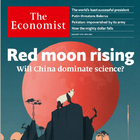
20230819 医学-Regenerative dentistry-牙釉质再生术
介绍: THE HUMAN body is a marvellous thing. But like anything built by
evolution, it has plenty of flaws. Consider teeth. Whereas sharks grow new
teeth throughout their lives, adult humans get one set, which must last 60
years or more.
That is tricky. A combination of poverty, sugar-rich diets and poor hygiene
mean...
介绍: THE HUMAN body is a marvellous thing. But like anything built by
evolution, it has plenty of flaws. Consider teeth. Whereas sharks grow new
teeth throughout their lives, adult humans get one set, which must last 60
years or more.
That is tricky. A combination of poverty, sugar-rich diets and poor hygiene
means 2.5bn people around the world suffer from tooth decay, in which acid
produced by mouth-dwelling bacteria eats away at the hard enamel that coats
the outside of a tooth. That can open the door to painful infections, which
cause further damage. Once decay has set in, all a dentist can do is fill the
gap with an artificial plug—a filling.
But in a paper published in Cell, Hannele Ruohola-Baker, a stem-cell
biologist at the University of Washington, and her colleagues offer a possible
alternative. Stem cells are those that have the capacity to turn themselves
into any other type of cell in the body. It may soon be possible, the
researchers argue, to use those protean cells to regrow a tooth’s enamel
naturally.
The first step was to work out exactly how enamel is produced. That is
tricky, because enamel-making cells, known as ameloblasts, disappear soon
after a person’s adult teeth have finished growing. To get round that
problem, the researchers turned to samples of tissue from human foetuses
that had been aborted, either medically or naturally. Such tissues contain
plenty of functioning ameloblasts.
The researchers then checked to see which genes were especially active in
the enamel-producing cells. Tooth enamel is made mostly of calcium
phosphate, and genes that code for proteins designed to bind to calcium were
particularly busy. They also assessed another type of cell called
odontoblasts. These express genes that produce dentine, another type of hard
tissue that lies beneath the outer enamel.
Armed with that information, Dr Ruohola-Baker and her colleagues next
checked to see whether the stem cells could be persuaded to transform into
ameloblasts. The team devised a cocktail of drugs designed to activate the
genes that they knew were expressed in functioning ameloblasts. That did
the trick, with the engineered ameloblasts turning out the same proteins as
the natural sort. A different cocktail pushed the stem cells to become
odontoblasts instead.
Culturing the cells together produced what researchers call an organoid—a
glob of tissue in a petri dish which mimics a biological organ. The organoids
happily churned out the chemical components of enamel. Having both cell
types seemed to be crucial: when odontoblasts were present alongside
ameloblasts, genes coding for enamel proteins were more strongly expressed
than with ameloblasts alone.
For now, the work is more a proof of concept than a prototype of an
imminent medical treatment. The next step, says Dr Ruohola-Baker, is to try
to boost enamel production even further, with a view to eventually beginning
clinical trials. The hope is that, one day, medical versions of the team’s
organoids could be used as biological implants, to regenerate a patient’s
decayed teeth.
Stem-cell-based therapies are not the only ones heading to clinical trials.
Another class of treatments is known as biomimetic repair. This involves
rebuilding the tooth crown using synthetic proteins, which are similar, but
not quite identical, to human enamel. Unlike stem-cell treatments, the
proteins could be included in toothpaste, mouthwash and even cough drops.
But synthetic formulations can be less durable than human enamel.
It will take time for either technology to arrive in the clinic. One question is
just how durable the enamel made by stem-cell-derived ameloblasts proves
to be. Another is how best to deliver the stem cells to a patient’s mouth. But
these findings are promising. As any dentist will tell you, prevention is better
than cure. But a better cure would be welcome nonetheless

